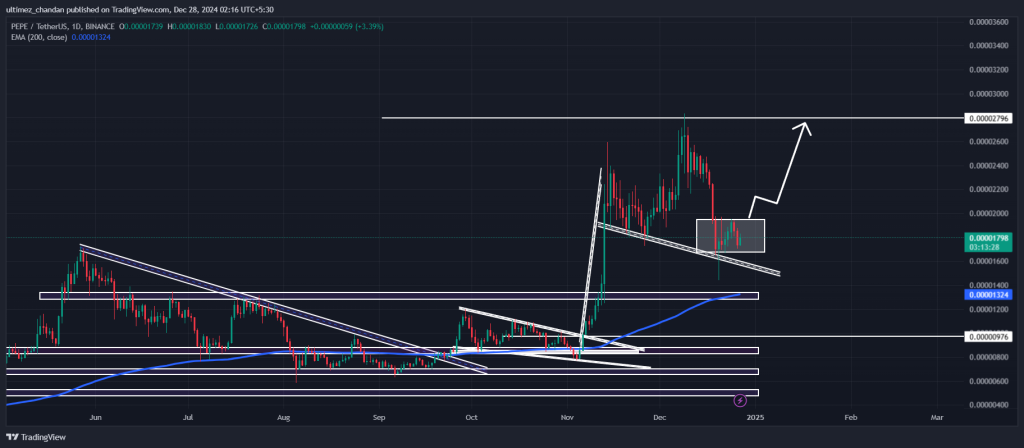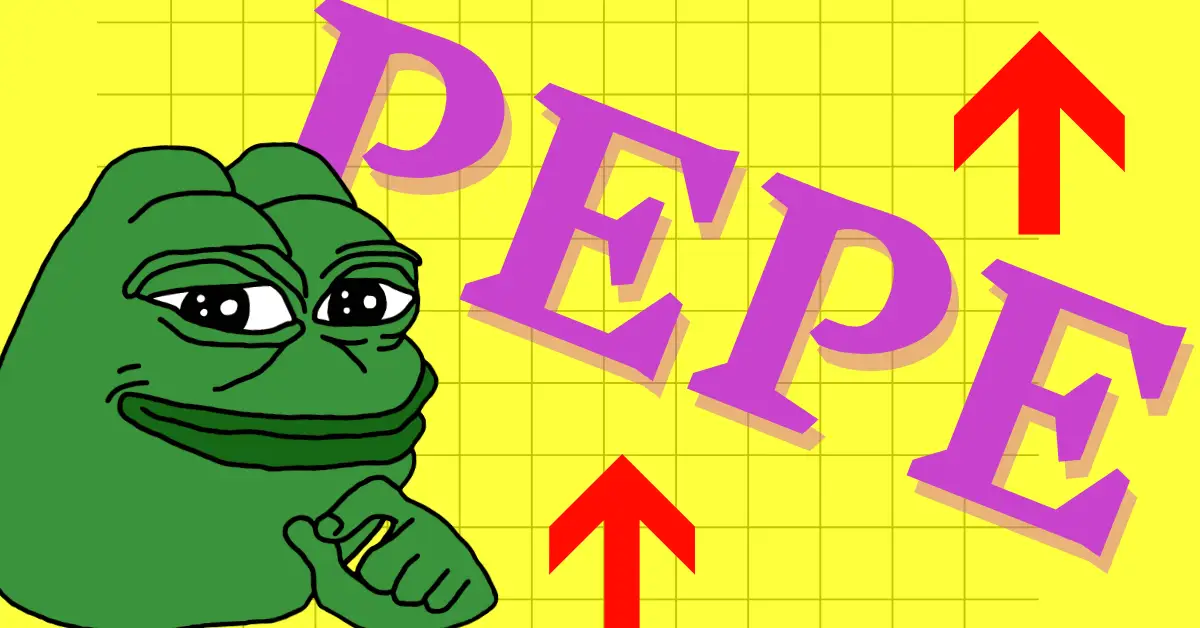Amid ongoing market uncertainty, Pepe (PEPE), the world’s third largest cryptocurrency meme coin, is receiving significant attention from whales and traders. As of December 28, 2024, the entire cryptocurrency market appears to be struggling, including major assets such as Bitcoin, Ethereum, Solana, and PEPE.
PEPE Whale Purchases 1.42 Trillion Meme Coins
Despite these challenges, whales and traders are starting to show interest and confidence in the token, as reported by on-chain analytics firm Coinglass and whale trade tracking firm Lookonchain.
Recently, Lookonchain posted on
However, this significant accumulation of meme coins occurred over a six-day period, signaling an ideal dip buying opportunity. In addition to this whale acquisition, PEPE spot inflow/outflow data shows that exchanges witnessed significant outflows of $40.86 million worth of PEPE. This means that long-term holders are withdrawing their tokens from the exchange.
Outflows are an on-chain indicator of exchange withdrawals by long-term holders, often indicating potential upward momentum and increased buying pressure.
PEPE technology analysis and future levels
According to expert technical analysis, PEPE has been consolidating within a narrow range between $0.0000167 and $0.0000195 over the past 10 days. However, a breakthrough from this consolidation could give meme coins a major push.

PEPE Price Forecast
Recent price action suggests that if PEPE violates this consolidation area and closes the daily candle above the $0.000020 level, it is likely to surge 40% in the coming days and reach $0.0000278.
The bullish case for PEPE is only valid if the daily candle closes above the $0.000020 level. Otherwise, you may not gain upward momentum.
Current price momentum
At press time, PEPE is trading near $0.000018 and has experienced a price increase of over 4.5% in the last 24 hours. During the same period, trading volume decreased slightly by 3.2%, indicating a decrease in participation from traders and investors due to changes in market sentiment.

